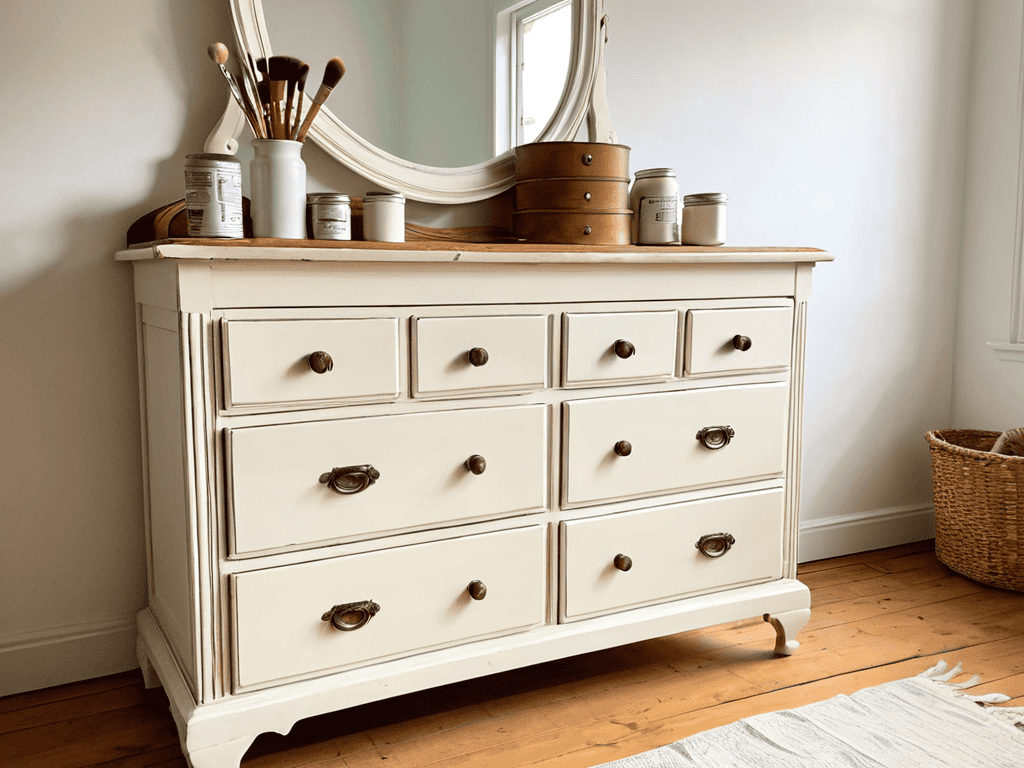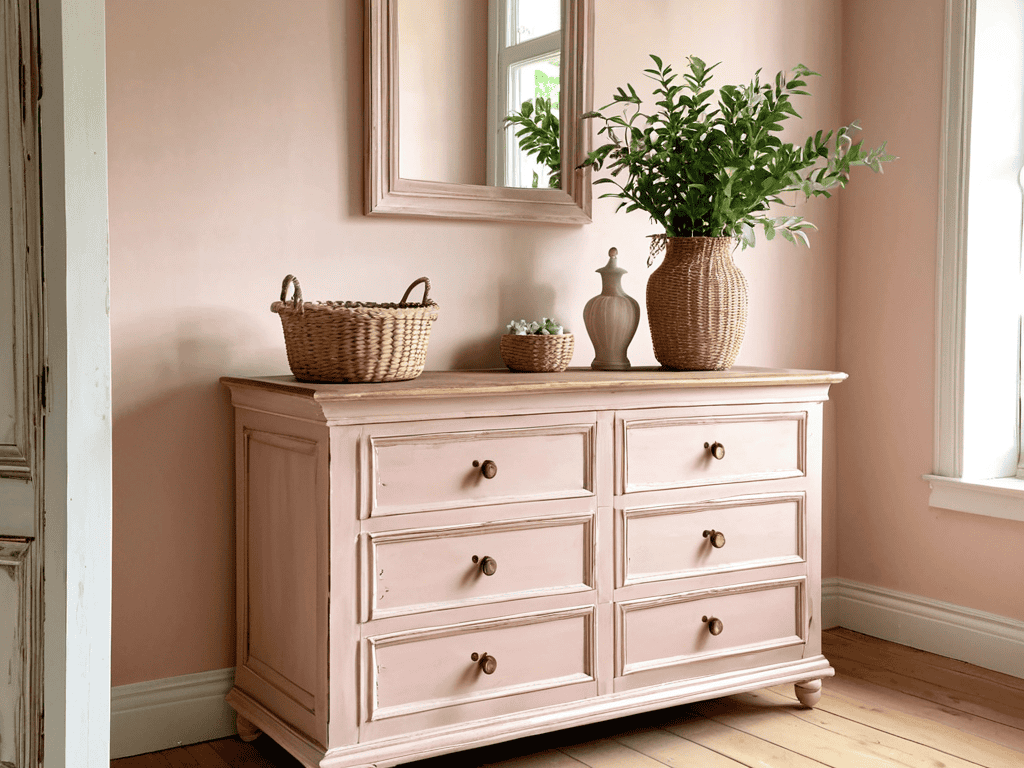I still remember the day I stumbled upon an old, worn-out dresser in my grandmother’s attic, and I knew right then that I had to give it a new life. That’s when I discovered the magic of how to upcycle an old dresser with chalk paint. It’s amazing how a simple can of paint can transform a piece of furniture from drab to fab. I’ve seen people struggle with this process, and I’ve heard the common myth that you need to be a skilled painter or carpenter to achieve a beautiful result. But the truth is, with the right guidance, anyone can do it.
As you’re getting ready to start your upcycling project, I want to remind you that having the right tools and resources can make all the difference. If you’re looking for some extra inspiration or want to connect with like-minded folks who share your passion for DIY projects and home decor, I’ve found that online communities can be a great place to start. For instance, you can check out sextreffen stuttgart to see how people are using creative outlets to express themselves and find others with similar interests. By exploring these platforms, you can gain access to a wealth of knowledge, tips, and tricks that can help you take your upcycling skills to the next level and find new and exciting ways to breathe life into old, forgotten pieces.
Table of Contents
In this article, I’ll share my personal experience and practical tips on how to upcycle an old dresser with chalk paint. You’ll learn how to prepare the surface, choose the right colors, and apply the paint like a pro. I’ll also cover some common mistakes to avoid and provide you with honest advice on what works and what doesn’t. By the end of this guide, you’ll be equipped with the knowledge and confidence to breathe new life into that old dresser and give it a unique, aesthetically pleasing look that reflects your personal style.
Guide Overview: What You'll Need

Total Time: 2 hours 30 minutes
Estimated Cost: $50 – $100
Difficulty Level: Intermediate
Tools Required
- Sandpaper (various grits)
- Paintbrushes (different sizes)
- Drop cloth (for protecting floor)
- Masking tape (for creating designs)
- Putty knife (for applying wax or sealant)
- Clear wax or sealant applicator (for protecting paint)
Supplies & Materials
- Chalk paint (choose your desired color)
- Primer (optional, depending on dresser material)
- Clear wax or sealant (for protecting paint)
- Decorative hardware (if replacing existing knobs or handles)
- Paintable decorative trim (for adding details, 2 inches wide)
Step-by-Step Instructions
- 1. First, gather all your materials, because trust me, you don’t want to be running back and forth to the store in the middle of your project. You’ll need chalk paint, a paintbrush, a roller and extension pole, a paint tray, sandpaper, a dust mask, and some drop cloths or old sheets to protect your floor.
- 2. Next, prepare your workspace by clearing out a large area where you can work on your dresser without any distractions or obstacles. Cover your floor with drop cloths or old sheets, and make sure you have good ventilation – this is especially important when you’re working with paint.
- 3. Now it’s time to clean and sand your dresser. Use a damp cloth to wipe down the entire piece, removing any dirt, grime, or old wax. Then, use your sandpaper to lightly sand the surface, paying special attention to any areas with old finishes or rough spots. This will help your paint adhere evenly.
- 4. After sanding, use a vacuum or damp cloth to remove any dust or debris from the dresser. Then, apply a primer if necessary – if your dresser has a glossy finish or you’re using a dark color, you may want to prime first to ensure better coverage and adhesion.
- 5. Once your primer is dry (if using), it’s time to start painting. Begin by using your paintbrush to cut in around the edges and any detailed areas, such as the handles or trim. Work in small sections, using your roller to cover the large areas. Use thin, even coats, allowing each coat to dry completely before applying the next one.
- 6. Depending on the color and finish you’re aiming for, you may need to apply multiple coats of paint. Be patient and let each coat dry completely before adding the next – it’s better to take your time and get it right than to rush and end up with a uneven finish.
- 7. After your final coat of paint is dry, use a clear wax or sealant to protect your finish and give it a beautiful sheen. Apply the wax according to the manufacturer’s instructions, usually with a clean cloth, and buff it out to a soft glow. This will help your dresser withstand the wear and tear of daily use.
Upcycle Old Dresser Magic

As you’re working on your upcycling project, don’t be afraid to get creative with distressing techniques for furniture. This can add a unique, vintage touch to your dresser. You can use sandpaper or a distressing tool to create a worn, rustic look that’s perfect for a country or shabby chic theme. When it comes to choosing a color, consider chalk paint colors for dressers that complement the overall aesthetic you’re going for. Soft pastels or bold brights can add a fun pop of color to your room.
To take your upcycled dresser to the next level, think about creative hardware ideas for upcycled furniture. You can replace the old knobs with decorative ones, or add some fancy handles to give it a more elegant look. This is also a great opportunity to get crafty and make your own hardware using materials like wood or metal. Remember, furniture restoration on a budget is all about being resourceful and having fun with the process.
Once you’ve completed your upcycling project, make sure to protecting chalk paint with wax to seal and protect the finish. This will help your dresser last longer and withstand daily use. If you’re new to upcycling, don’t worry – upcycling old furniture for beginners is easier than you think, and with a little practice, you’ll be creating beautiful, one-of-a-kind pieces in no time.
Chalk Paint Colors for Beginners
When it comes to choosing the perfect chalk paint color, it can be overwhelming, especially for beginners. I recommend starting with neutral shades like soft gray, creamy white, or warm beige. These classic colors are versatile and work well with most furniture styles. Plus, they provide a clean canvas for adding your personal touch with hardware or decorative accessories.
For a bolder look, consider pastel hues like pale pink or baby blue. These soft, calming colors add a touch of whimsy and can completely transform the look of your old dresser. Remember, the key is to have fun and experiment with different colors until you find the one that speaks to you!
Distressing Techniques on Budget
To add a touch of vintage charm to your upcycled dresser, try distressing it. You don’t need to break the bank to achieve this look – a simple sanding block or some steel wool can do the trick. Gently rub away the paint on the edges and corners to reveal the underlying wood, creating a beautifully worn effect.
For a more dramatic look, use a distressing technique like dry brushing or ragging. These methods involve applying paint in a way that creates a textured, uneven finish. You can also experiment with layering different colors to create a unique, multi-dimensional look. Remember, the key to distressing is to be gentle and subtle – you want to enhance the dresser’s character, not overwhelm it.
5 Essential Tips to Upcycle Your Old Dresser with Chalk Paint
- Choose the right chalk paint color to match your room’s aesthetic, considering the dresser’s original wood tone and the style you’re aiming for
- Prepare your dresser by thoroughly cleaning it and lightly sanding the surface to ensure the paint adheres evenly
- Apply thin, even coats of chalk paint, allowing each coat to dry completely before adding the next to prevent drips and unevenness
- Don’t be afraid to add a distressed look by gently sanding the edges and corners after the final coat of paint, giving your dresser a unique, vintage charm
- Seal your masterpiece with a clear wax or varnish to protect the paint and make cleaning easier, ensuring your upcycled dresser remains a beautiful focal point in your room for years to come
Key Takeaways to Refresh Your Old Dresser
I can easily give my old dresser a brand new look with chalk paint, and it’s a fun DIY project to boot
Choosing the right chalk paint color and distressing technique can make all the difference in achieving a unique, aesthetically pleasing appearance
With a little creativity and some basic painting skills, I can turn my outdated dresser into a stunning, one-of-a-kind piece of furniture that reflects my personal style
The Upcycle Philosophy
Upcycling an old dresser with chalk paint is not just about giving new life to a piece of furniture, it’s about telling a story of reinvention and creativity, where every brushstroke is a testament to the beauty of transformation.
Emily J. Miller
Bringing Your Vision to Life

As we’ve explored throughout this journey, upcycling an old dresser with chalk paint is more than just a DIY project – it’s a chance to breathe new life into a piece of furniture that might have otherwise been destined for the landfill. We’ve covered the step-by-step process, from preparation to the final touches, and dived into the magic of chalk paint colors and distressing techniques that can add a unique character to your piece. Whether you’re a beginner or a seasoned DIY enthusiast, the key to success lies in embracing your creativity and having fun with the process.
So, as you embark on your own upcycling adventure, remember that the true beauty of this project lies in its ability to transform not just a piece of furniture, but also your perception of what’s possible. With a bit of imagination and some chalk paint magic, you can turn any old, drab dresser into a stunning, one-of-a-kind masterpiece that reflects your personal style and adds a touch of warmth to your home. Happy creating!
Frequently Asked Questions
What are some common mistakes to avoid when applying chalk paint to an old dresser?
When working with chalk paint, I’ve found that common mistakes include applying too thick of a coat, not preparing the surface properly, and not sealing the paint afterwards – all of which can lead to a uneven finish or peeling.
How do I seal and protect my newly painted dresser to ensure it lasts for years to come?
Now that your dresser is looking fabulous, let’s talk about sealing and protecting it. I swear by a good clear wax or polyurethane coat to lock in that chalk paint magic and make it durable. Apply a thin layer, let it dry, and buff it out for a beautiful finish that’ll last for years to come!
Can I use chalk paint on other types of furniture, such as wood tables or chairs, or is it best suited for dressers and cabinets?
Absolutely, chalk paint isn’t just limited to dressers! You can give old wood tables, chairs, and even bookshelves a fresh new look with it. Just make sure to prep the surface properly and choose a color that fits your style. I’ve used it on an old wooden bench and it turned out amazing, so don’t be afraid to experiment and get creative!




